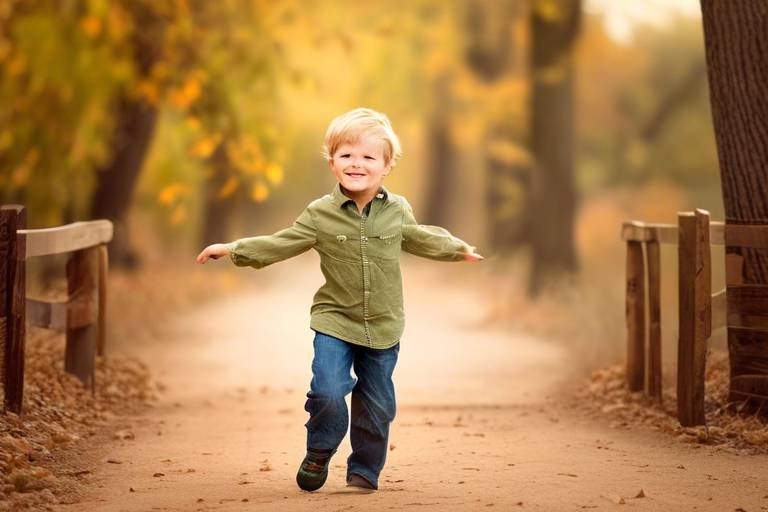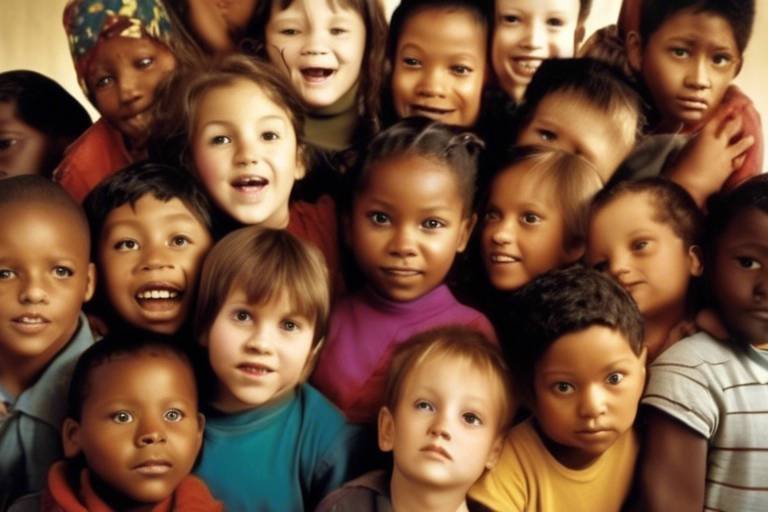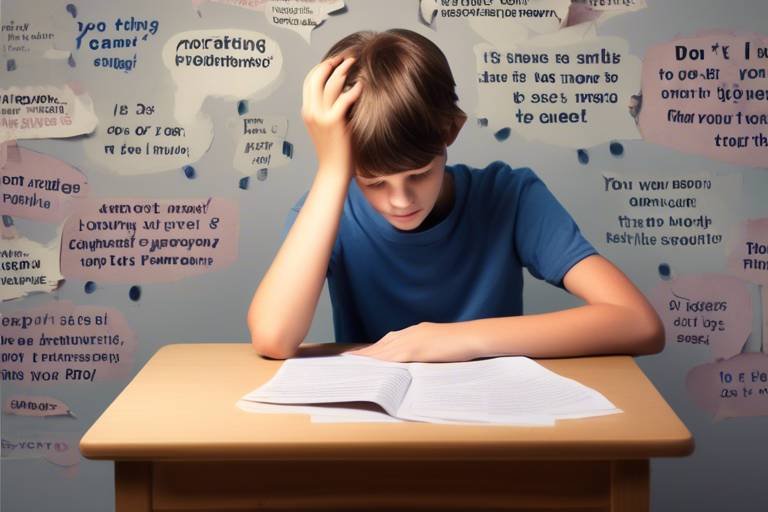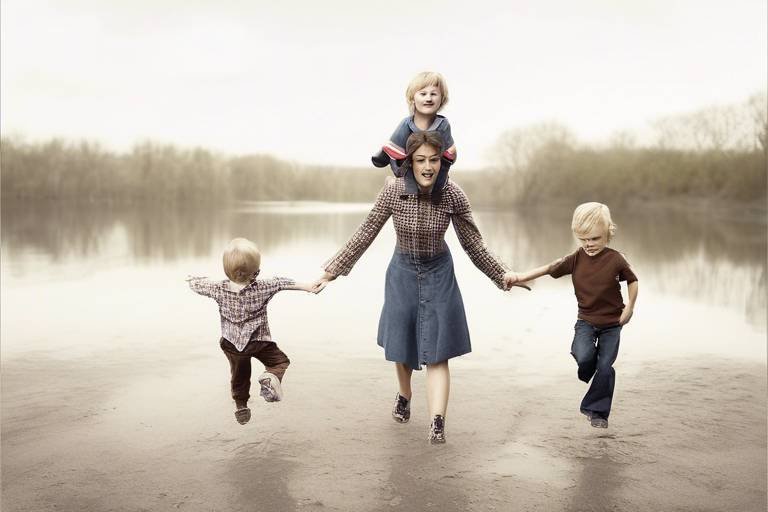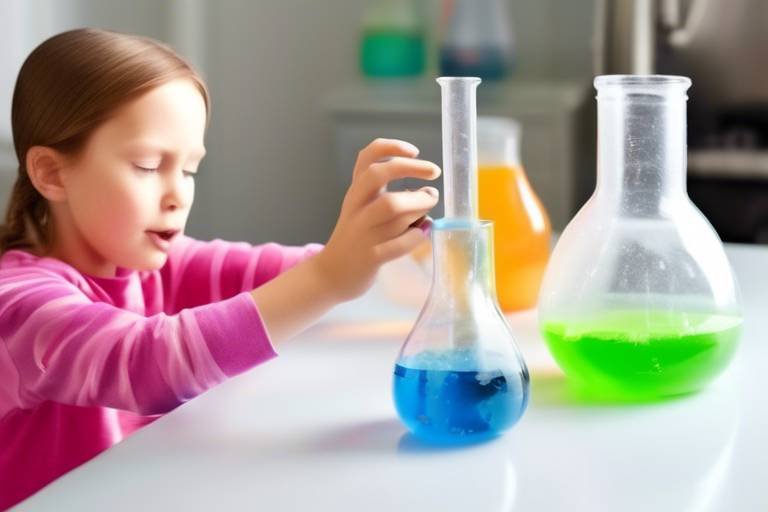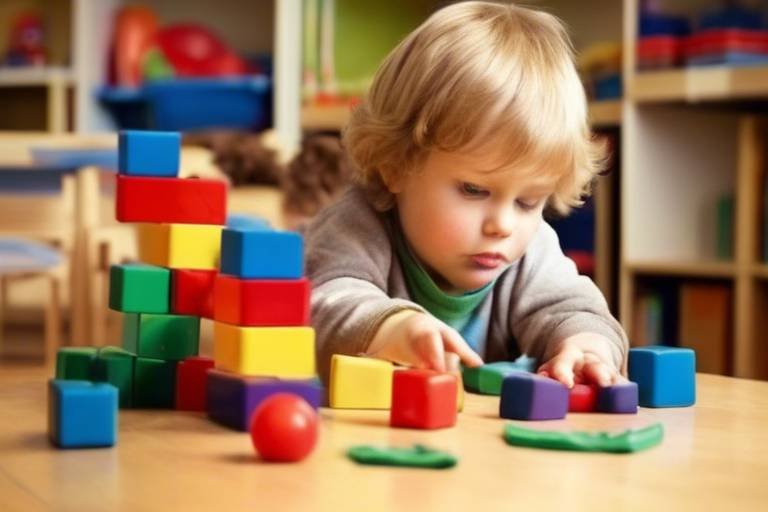Teaching Your Child About Personal Hygiene
Teaching your child about personal hygiene is not just about keeping them clean; it’s about instilling a sense of responsibility, boosting their confidence, and preparing them for social interactions. As parents, you play a pivotal role in guiding your children through the maze of hygiene practices that will serve them for a lifetime. Imagine this: every time your child washes their hands or brushes their teeth, they are not just performing a task; they are building a foundation for a healthy lifestyle. So, how do you make this journey enjoyable and effective?
In this article, we will explore the essential aspects of teaching children about personal hygiene, emphasizing its importance for health, self-esteem, and social interactions. We will cover various topics to help parents instill good habits in their children. From toddlers to teenagers, each phase of development comes with its own set of challenges and opportunities. The key is to approach these lessons with creativity and positivity. Are you ready to dive into the world of personal hygiene with your little ones?
Understanding the significance of personal hygiene is crucial for children. Good hygiene practices contribute to overall health, preventing illnesses like colds and infections. When children learn to care for themselves, they not only protect their bodies but also boost their self-esteem. Picture a child who walks into a room with confidence, knowing they smell fresh and look clean. Isn’t that a wonderful sight? Furthermore, personal hygiene plays a vital role in social interactions. Children who maintain good hygiene are often more accepted by their peers, leading to healthier friendships and a positive self-image.
Different age groups require tailored hygiene practices. For example, toddlers might need help with basic tasks, while teenagers should be encouraged to take full responsibility for their hygiene. It’s essential to recognize that each stage of development comes with unique needs. Here’s a brief overview:
| Age Group | Hygiene Focus |
|---|---|
| Toddlers | Basic habits like handwashing and brushing teeth |
| School-Aged Children | Daily bathing, deodorant use, and dental care |
| Teenagers | Personal grooming, skincare, and independent hygiene practices |
As we delve deeper into each age group, we’ll uncover effective hygiene routines that make learning fun and engaging.
Teaching toddlers basic hygiene habits is essential for their growth. At this age, they are like little sponges, soaking up everything around them. Introducing practices like handwashing and brushing teeth can be a delightful experience. You can turn handwashing into a game by singing songs or using colorful soaps that capture their attention. For instance, try the “Happy Birthday” song – it’s the perfect length for a thorough wash!
Incorporating games and songs can make handwashing enjoyable for toddlers. Use a timer or play a fun video while they wash their hands to keep them engaged. You can also create a reward chart where they earn stickers for consistent handwashing. This not only makes the process fun but also instills a sense of achievement.
Making tooth brushing a fun activity can help toddlers develop a positive attitude towards oral hygiene. Consider using a toothbrush with their favorite character or letting them choose a toothpaste flavor. You can also brush your teeth together, turning it into a family bonding moment. The more enjoyable you make it, the more likely they are to develop a lifelong habit!
As children enter school, they encounter new social settings that make personal hygiene even more important. They need to understand the importance of daily bathing, using deodorant, and maintaining dental care. Discuss these topics openly, making them feel comfortable about their bodies and hygiene routines. Encourage them to take ownership of their hygiene by allowing them to choose their own products, such as soap and shampoo.
Establishing a daily hygiene routine is vital for children. A structured schedule incorporating essential hygiene practices makes them a natural part of everyday life. Consider creating a visual schedule that outlines daily hygiene tasks. This will help your child remember what to do and when. You can use colorful charts or stickers to make it visually appealing.
Using visual aids can help children remember their hygiene tasks. A colorful and engaging hygiene schedule can be placed in the bathroom or their bedroom, serving as a constant reminder. You can include pictures for each activity, making it easier for younger children to follow along.
Promoting independence in hygiene practices is important for children’s self-esteem. As they grow, encourage them to take responsibility for their personal hygiene. This could mean letting them choose their own towels or allowing them to decide when to shower. The more you empower them, the more confident they will become in their abilities.
Children may face various challenges related to personal hygiene, such as resistance or embarrassment. It’s essential to address these issues with empathy and understanding. Talk to your child about why hygiene is important and listen to their concerns. Sometimes, a simple conversation can ease their worries and motivate them to embrace good hygiene practices.
Q: How can I make hygiene fun for my child?
A: Use games, songs, and colorful products to make hygiene enjoyable. Turn tasks into fun activities that they look forward to.
Q: What if my child resists brushing their teeth?
A: Try different toothbrushes or toothpaste flavors, and brush together to make it a bonding experience. You can also set a timer for a fun challenge!
Q: At what age should my child start using deodorant?
A: Generally, children start needing deodorant around the age of 8-10, but it varies. Pay attention to their body changes and discuss it openly.
Q: How can I encourage my teenager to maintain good hygiene?
A: Foster open communication and allow them to choose their hygiene products. Discuss the importance of hygiene in social settings and self-care.

The Importance of Personal Hygiene
Understanding the significance of personal hygiene is crucial for children as it lays the foundation for their overall health and well-being. Just think about it: when kids practice good hygiene, they not only protect themselves from various illnesses but also boost their confidence in social situations. It's like having a superpower that keeps them safe and makes them feel good about themselves!
Good hygiene practices can prevent the spread of germs and diseases. For instance, washing hands regularly can significantly reduce the risk of infections, especially in young children who are more susceptible. Imagine a world where kids are less likely to catch colds or stomach bugs just because they learned to wash their hands properly. It's a win-win!
Moreover, personal hygiene plays a vital role in self-esteem. Children who maintain good hygiene are often more confident and comfortable in social settings. They feel good about their appearance and are less likely to face teasing or bullying related to body odor or unkempt looks. This confidence can pave the way for better friendships and social interactions, which are essential during their formative years.
In addition to health and confidence, personal hygiene also teaches children about responsibility. When they learn to take care of their bodies, they're not just following rules; they're developing habits that will serve them well throughout their lives. It's like planting a seed that will grow into a strong tree of self-care as they mature. Parents play a critical role in this process, guiding their children through the basics of hygiene and helping them understand why these practices matter.
To summarize, the importance of personal hygiene can be boiled down to a few key benefits:
- Health Protection: Reduces the risk of illness and infections.
- Boosts Confidence: Enhances self-esteem and social interactions.
- Teaches Responsibility: Instills lifelong habits of self-care.
By emphasizing these points, parents can help their children appreciate the value of personal hygiene, making it a natural part of their daily routine. After all, when kids understand the 'why' behind hygiene practices, they're more likely to embrace them wholeheartedly!

Age-Appropriate Hygiene Practices
When it comes to teaching children about personal hygiene, it's essential to recognize that different age groups have unique needs and capabilities. By tailoring hygiene practices to each developmental stage, parents can ensure that children not only understand the importance of hygiene but also embrace it as a natural part of their daily lives. Let's dive into effective hygiene routines for toddlers, school-aged children, and teenagers, making sure that each stage of development is addressed with suitable methods.
For toddlers, introducing basic hygiene habits is a crucial step in their growth. At this age, children are curious and eager to learn, which presents a perfect opportunity for parents to instill good habits. Engaging toddlers through fun activities can make the learning process enjoyable. For example, handwashing can be transformed into a delightful experience by singing a catchy song while washing hands. This not only helps them remember to wash their hands but also makes them look forward to it!
To make handwashing exciting, consider incorporating games that involve counting or using colorful soap. You could create a handwashing chart that tracks their progress, rewarding them with stickers for consistent handwashing. Visual aids can be incredibly effective at this stage. For instance, a simple drawing showing the steps of handwashing can serve as a reminder for your little one.
Similarly, when it comes to brushing teeth, making it a fun activity can significantly impact a toddler's attitude towards oral hygiene. You might want to turn tooth brushing into a family event, where everyone brushes their teeth together. Use a timer and encourage them to brush until the timer goes off, turning it into a little game. Choosing a toothbrush with their favorite character or using flavored toothpaste can also make this routine more appealing.
As children enter school, they encounter new social settings and peer influences. This is a pivotal time to reinforce the importance of personal hygiene practices such as bathing, deodorant use, and dental care. School-aged children begin to understand social cues, making it an ideal time to explain why hygiene matters in building friendships and self-confidence. For example, you can discuss how fresh breath and clean clothes can make them feel good and help them make friends.
Establishing a daily hygiene routine is vital for children. A structured schedule helps them understand what is expected and makes hygiene practices a natural part of their daily life. You can create a visual schedule that outlines each hygiene task. This might include pictures of brushing teeth, bathing, and washing hands, which can help younger children remember their tasks.
Using colorful charts or stickers can transform an ordinary routine into an engaging activity. For instance, you could create a chart that lists daily hygiene tasks alongside fun icons. Children can place a sticker next to each task they complete, turning hygiene into a rewarding game.
As children grow, promoting independence in hygiene practices becomes crucial for their self-esteem. Allowing them to take responsibility for their personal hygiene empowers them. You might set aside time for them to choose their own toothbrush or soap, giving them a sense of ownership. Encourage them to set their own reminders for tasks like brushing their teeth or taking a shower. By fostering independence, you’re not just teaching them hygiene; you’re also helping them build confidence and responsibility.
Children may face various challenges related to personal hygiene, such as resistance or embarrassment. It's essential to recognize these hurdles and approach them with understanding and patience. Open communication about hygiene can help children express their feelings and concerns. For instance, if a child is embarrassed about using deodorant, reassure them that it’s a normal part of growing up.
- What age should I start teaching my child about personal hygiene? It's best to start introducing basic hygiene practices as soon as your child is able to understand simple instructions, typically around 2-3 years old.
- How can I make hygiene fun for my child? Incorporate games, songs, and colorful charts to make hygiene routines enjoyable and engaging.
- What if my child resists hygiene practices? Approach the situation with patience, and try to understand their feelings. Open communication can help address their concerns.

Hygiene for Toddlers
Teaching toddlers about personal hygiene is not just a chore; it’s a delightful journey filled with laughter and learning. At this tender age, children are like sponges, soaking up everything around them, including the habits that will stick with them for life. So, how do we make hygiene fun and engaging for our little ones? The key is to turn these essential practices into playful activities. After all, who said washing hands or brushing teeth had to be boring?
One of the first hygiene habits to instill is handwashing. It’s crucial for keeping those tiny hands free from germs, especially before meals and after playtime. To make this practice enjoyable, consider incorporating fun songs or games during handwashing. For instance, you can sing a catchy tune that lasts about 20 seconds—long enough to ensure they wash thoroughly. You could also create a handwashing game where they have to wash their hands while pretending to be superheroes fighting off germs. This not only makes the process enjoyable but also helps them understand its importance.
Another vital aspect of hygiene is brushing teeth. It’s essential to cultivate a positive attitude towards oral care early on. To make brushing teeth a fun activity, you can introduce colorful toothbrushes featuring their favorite characters. Additionally, consider using a timer or a fun app that plays music while they brush. This way, they’ll be excited to brush their teeth for the full two minutes. You might even want to join them in brushing, turning it into a family bonding moment. Remember, the more fun you make it, the more likely they are to adopt these habits.
Here are a few creative ideas to incorporate into your toddler's hygiene routine:
- Handwashing Songs: Find or create a simple song that lasts for 20 seconds to sing while washing hands.
- Toothbrush Dance: Create a little dance that goes along with brushing teeth to make it more entertaining.
- Sticker Charts: Use a chart where they can place stickers each time they wash their hands or brush their teeth, rewarding them for consistency.
By making hygiene fun and interactive, you not only teach your toddlers the importance of cleanliness but also build their confidence and self-esteem. They’ll feel proud of their ability to take care of themselves, which is an invaluable lesson that lasts a lifetime. So, embrace the mess, the giggles, and the splashes, because these moments are not just about hygiene; they’re about instilling lifelong habits in a way that feels magical and exciting!
Q: How can I encourage my toddler to wash their hands regularly?
A: Make handwashing a fun activity by singing songs or playing games. Consider using colorful soap or fun soap dispensers to make it visually appealing.
Q: What is the best way to introduce tooth brushing to my toddler?
A: Use a toothbrush with their favorite character and let them choose their toothpaste flavor. Brush together and turn it into a playful routine.
Q: How often should toddlers brush their teeth?
A: Toddlers should brush their teeth twice a day—once in the morning and once before bed. Supervise them until they are around 7-8 years old to ensure they are brushing effectively.

Fun Handwashing Techniques
Teaching toddlers the importance of handwashing can be a delightful journey filled with creativity and fun! Instead of viewing it as a chore, you can transform handwashing into an engaging activity that your little ones will look forward to. One effective way to do this is by incorporating music and games. For instance, you could sing a catchy song while they wash their hands, ensuring they scrub for the recommended 20 seconds. A popular choice is the "Happy Birthday" song, which can be sung twice to make the time fly by!
Another innovative approach is to turn handwashing into a mini-adventure. You can create a story where their hands are the heroes fighting off invisible germs. Use colorful soap and fun-shaped sponges to make the experience visually stimulating. You might even consider using a timer with fun sounds to signal when it's time to rinse off. This not only keeps them engaged but also helps them understand the importance of thorough handwashing.
Moreover, you can introduce handwashing charts that feature stickers as rewards for consistent handwashing. This visual representation can motivate your child to participate actively in their hygiene routine. For example, you can create a chart that looks like this:
| Date | Handwashing | Sticker Earned |
|---|---|---|
| Monday | ✅ | ⭐ |
| Tuesday | ✅ | ⭐ |
| Wednesday | ❌ | ✖️ |
By making handwashing fun, you’re not just teaching your child a vital hygiene practice; you’re also instilling a sense of accomplishment and responsibility. Remember, the goal is to create positive associations with handwashing, so the more enjoyable you make it, the more likely they are to embrace it as a lifelong habit!
- At what age should I start teaching my child about handwashing? It's best to start teaching handwashing as soon as your toddler begins to explore their environment, typically around 2 years old.
- How can I encourage my child to wash their hands regularly? Create a fun routine, use engaging songs, and offer rewards like stickers to motivate them.
- What are the most effective techniques for teaching handwashing? Use visual aids, storytelling, and hands-on activities to make the process enjoyable and memorable.

Brushing Teeth Made Easy
Getting toddlers excited about brushing their teeth can feel like trying to convince a cat to take a bath—challenging, to say the least! But with a sprinkle of creativity and a dash of fun, you can turn this daily chore into an enjoyable adventure. First and foremost, it’s essential to explain to your little one why brushing is important. You might say something like, “Brushing helps keep your teeth strong and your smile bright!” This simple explanation can make a world of difference in how they perceive this routine.
One effective strategy is to incorporate music and games into the routine. Consider playing a fun song that lasts for two minutes—the recommended time for brushing. You could even create a little dance party in the bathroom! This not only makes brushing enjoyable but also helps them develop a sense of timing. You can also use a colorful toothbrush featuring their favorite cartoon character to make the experience more appealing. A toothbrush that they love can spark excitement and encourage them to want to brush their teeth.
Another fantastic idea is to create a brushing chart that rewards your child for consistent brushing. You can use stickers or stars for each successful brushing session. When they accumulate a certain number, they can earn a small reward, like a fun outing or a new book. This rewards system not only motivates them but also instills a sense of accomplishment. Remember, the goal is to make brushing feel like a positive experience rather than a chore.
Additionally, demonstrating proper brushing techniques is key. Show your child how to hold the toothbrush at a 45-degree angle and gently move it in circular motions. You can even turn it into a game by pretending to be a dentist, where they can practice on you first! Kids love role-playing, and this approach can help them visualize the process. Encourage them to brush all surfaces of their teeth—front, back, and chewing surfaces—while reminding them to brush their tongues, too, as it’s crucial for fresh breath.
Lastly, don’t forget to lead by example! Children are like little sponges, soaking up everything they see. Brush your teeth together in the morning and at night. Make it a family affair! When they see you prioritizing your oral hygiene, they’ll be more likely to follow suit. This shared experience can also strengthen your bond, turning a mundane task into a cherished family routine.
Q: At what age should my child start brushing their teeth?
A: Children should begin brushing as soon as their first tooth appears, usually around six months of age. Initially, you can help them with a soft-bristled toothbrush and a tiny smear of fluoride toothpaste.
Q: How can I encourage my child to brush their teeth regularly?
A: Make brushing fun by using songs, games, and rewards. Creating a routine and brushing together can also help instill good habits.
Q: How often should my child brush their teeth?
A: Ideally, children should brush their teeth twice a day—once in the morning and once before bed. This helps remove plaque and prevent cavities.
Q: What should I do if my child refuses to brush their teeth?
A: Stay calm and patient. Try to understand their reasons for resistance and address them. You might consider letting them choose their toothbrush or toothpaste flavor, making them feel more in control.

Hygiene for School-Aged Children
As children step into the exciting world of school, their social interactions expand, and so does the importance of personal hygiene. This is not just about keeping germs at bay; it’s about fostering confidence and helping them feel comfortable in their skin. Imagine your child walking into a classroom, feeling fresh and clean, ready to tackle the day! It’s crucial to instill good hygiene habits that will stick with them for life.
At this age, children start to become more aware of their bodies and how they present themselves to others. Simple practices like regular bathing, using deodorant, and maintaining good dental hygiene become essential. It’s not just about looking good; it’s about feeling good and being healthy. For instance, did you know that proper hygiene can significantly reduce the risk of illnesses? A study shows that regular handwashing can cut the risk of respiratory infections by about 21%. That’s a number worth paying attention to!
To help school-aged children understand the importance of these practices, parents can introduce a more structured approach to hygiene. Here are some key areas to focus on:
- Bathing: Encourage your child to shower or bathe daily, especially after physical activities. This habit not only keeps them clean but also helps to refresh their mind and body.
- Deodorant Use: Around the age of 8 or 9, children may begin to notice body odor. It’s a good idea to discuss this openly and introduce them to using deodorant. Make it a fun shopping trip to choose their favorite scent!
- Dental Care: Reinforce the importance of brushing teeth at least twice a day and flossing. You can make this routine exciting by using colorful toothbrushes and fun toothpaste flavors.
In addition to these practices, it’s important to teach children about the social aspects of hygiene. Discuss how good hygiene can influence friendships and social interactions. For example, children who take care of their personal hygiene are more likely to feel accepted and confident among peers. You can even role-play different scenarios where they might encounter questions or comments about hygiene, helping them navigate these situations with ease.
Moreover, it’s vital to lead by example. Children are like sponges, soaking up everything they see. When they see their parents prioritizing personal hygiene, they are more likely to adopt those habits themselves. So, don’t hesitate to share your own routines and make it a family affair!
Lastly, addressing any resistance or embarrassment they might feel is crucial. If your child is hesitant about certain hygiene practices, have an open conversation about it. Ask them what makes them uncomfortable and provide reassurance. It’s all about creating a safe space where they feel supported and understood.
1. At what age should I start teaching my child about personal hygiene?
It’s never too early to start! You can begin introducing basic hygiene concepts as soon as they are toddlers, but more structured practices should be emphasized around school age.
2. How can I encourage my child to maintain good dental hygiene?
Make it fun! Use colorful toothbrushes, flavored toothpaste, and even reward systems to motivate them. Brushing together can also make it a bonding activity.
3. What should I do if my child resists bathing or using deodorant?
Talk to them about their feelings and try to understand their perspective. Offer choices to empower them, such as letting them pick their own soap or deodorant scent.

Building a Routine
Establishing a daily hygiene routine is vital for children, as it helps them internalize these important practices. Think of it like planting a seed; with the right care and attention, it will grow into a strong tree. By creating a structured schedule that incorporates essential hygiene activities, you can make personal care a natural part of their everyday life. But how do we do this effectively? It’s all about consistency and creativity!
First, consider the power of a visual schedule. Children are often visual learners, and having a colorful chart that outlines their daily hygiene tasks can be incredibly beneficial. You can create a chart that includes pictures and stickers that represent each task. For example, a picture of a toothbrush for brushing teeth or a soap bar for handwashing. This not only makes the routine more engaging but also helps them remember what they need to do, turning hygiene into a fun game rather than a chore.
Additionally, it’s essential to encourage independence in your child’s hygiene practices. As they grow, they should take on more responsibility for their personal care. This empowerment is crucial for building their self-esteem. You might start by guiding them through the process—showing them how to wash their hands properly or brush their teeth effectively. Once they grasp the basics, step back and allow them to take the lead. Celebrate their achievements, no matter how small, as this will motivate them to continue their good habits.
To further reinforce these routines, you can incorporate hygiene practices into daily activities. For example, you can designate specific times for brushing teeth—like after breakfast and before bed—so that these tasks become part of their daily rhythm. Make it a family affair! Brush your teeth together or sing a fun song while washing hands. This not only encourages your child but also strengthens family bonds through shared activities.
In summary, building a hygiene routine is about creating a supportive and engaging environment that empowers children. By utilizing visual aids, encouraging independence, and incorporating hygiene practices into family activities, you can help your child develop lifelong habits that promote health and confidence. Remember, the goal is to make hygiene a fun and essential part of their everyday life!
- At what age should I start teaching my child about personal hygiene? It's best to start as early as possible. Even toddlers can learn basic hygiene practices like washing hands and brushing teeth.
- How can I motivate my child to follow their hygiene routine? Use fun visuals, reward systems, and make it a family activity to encourage your child to engage with their hygiene routine.
- What should I do if my child resists personal hygiene practices? Stay patient and positive. Explain the benefits of hygiene in a way that resonates with them and consider turning the tasks into games or songs.

Creating a Visual Schedule
Establishing a visual schedule for hygiene practices can be a game-changer for children. Imagine walking into a room where colorful charts and fun illustrations beckon your child to engage in their daily routines. A visual schedule not only makes it easier for kids to remember their hygiene tasks but also adds an element of excitement to what can sometimes feel like mundane chores. The beauty of a visual schedule lies in its simplicity and effectiveness.
To create a visual schedule, start by gathering some materials. You can use poster boards, stickers, or even digital tools to design a chart that resonates with your child's interests. For instance, if your child loves dinosaurs, incorporate dino graphics alongside the hygiene tasks. This personalization makes the schedule more appealing and encourages them to participate.
Once you've set the stage, it's time to outline the daily hygiene tasks. Consider including activities such as:
- Brushing teeth
- Washing hands
- Taking a bath or shower
- Combing hair
- Putting on deodorant
Each task can be represented by a fun image or sticker. For example, a bright toothbrush icon can signify the tooth brushing time. As your child completes each task, they can place a sticker or checkmark next to it, providing a sense of accomplishment and motivation to keep going. This visual reinforcement not only helps them remember their hygiene routine but also instills a sense of pride in their ability to manage their cleanliness independently.
Moreover, consider involving your child in the creation process. Ask them which images or characters they would like to see on their schedule. This involvement fosters a sense of ownership and encourages them to stick to the routine. You might even find that they look forward to completing their hygiene tasks just to see their favorite characters on the chart!
Lastly, remember to keep the schedule in a visible location, such as on the bathroom mirror or the refrigerator. The more accessible it is, the more likely your child will refer to it throughout the day. As they grow older, you can gradually transition from a visual schedule to a more flexible routine, empowering them to take charge of their personal hygiene. Creating a visual schedule is not just about hygiene; it’s about making healthy habits fun and engaging, setting the stage for a lifetime of self-care.
Q: How often should I update the visual schedule?
A: It's a good idea to review and update the visual schedule every few months or whenever your child's hygiene needs change. This keeps it relevant and engaging.
Q: What if my child resists following the schedule?
A: If your child shows resistance, try discussing their feelings and concerns. You can also offer rewards for completing tasks to encourage adherence to the schedule.
Q: Can I use digital tools for a visual schedule?
A: Absolutely! There are many apps available that allow you to create digital visual schedules. These can be interactive and may appeal to tech-savvy kids.
Q: How can I make hygiene tasks more fun?
A: Incorporating games, songs, or challenges related to hygiene can make these tasks enjoyable. For instance, you can set a timer for tooth brushing and turn it into a mini-race.

Encouraging Independence
Encouraging independence in hygiene practices is a crucial step in fostering your child's self-esteem and confidence. As children grow, they naturally seek more autonomy, and personal hygiene is a perfect area to nurture this desire. You might wonder, how can you effectively promote this independence while ensuring they maintain good habits? The key lies in empowerment and gradual responsibility.
Start by giving your child age-appropriate tasks that they can manage on their own. For instance, toddlers can begin to wash their hands with supervision, while school-aged children can take on more complex tasks like showering and using deodorant. It's essential to celebrate their achievements, no matter how small. A simple "Great job washing your hands!" can go a long way in reinforcing positive behavior.
Moreover, creating a sense of ownership is vital. You can achieve this by allowing your child to choose their own hygiene products, such as toothpaste or soap. When children feel involved in the decision-making process, they're more likely to take pride in their hygiene routine. Additionally, consider setting up a fun chart where they can track their hygiene tasks. This visual representation not only makes the process engaging but also encourages them to take responsibility for their actions.
As your child grows into their teenage years, the focus on independence becomes even more critical. They may start to feel self-conscious about their hygiene, especially when interacting with peers. To combat this, have open conversations about the importance of personal hygiene and how it impacts their social life. You might even share relatable anecdotes from your own childhood to break the ice. Remember, communication is key!
Incorporating daily check-ins can also be beneficial. Ask your child how they feel about their hygiene routine and if there are any areas they want to improve. This dialogue fosters a sense of partnership and encourages them to take the initiative in their hygiene practices. After all, when children feel heard and valued, they are more likely to embrace their independence.
Finally, be patient and understanding. Independence doesn’t happen overnight. There will be times when your child may resist or forget their hygiene tasks. Instead of expressing frustration, use these moments as teaching opportunities. Gently remind them of the benefits of good hygiene, and encourage them to keep trying. With your support and encouragement, they will gradually develop a sense of responsibility and independence in their personal hygiene practices.
- What age should I start teaching my child about personal hygiene? It's never too early to start! Begin with simple concepts like handwashing when they are toddlers.
- How can I make hygiene fun for my child? Use games, songs, and colorful charts to make hygiene practices enjoyable.
- What if my child resists following hygiene routines? Engage in open conversations, listen to their concerns, and provide gentle reminders to encourage them.
- How can I promote independence in my child's hygiene practices? Allow them to choose their hygiene products and track their tasks with a fun chart.

Addressing Common Hygiene Challenges
As parents, we often face the reality that teaching our children about personal hygiene can come with its own set of challenges. It's not uncommon for kids to resist certain hygiene practices or feel embarrassed about them. Understanding these common hurdles can help us navigate this journey more effectively. For instance, some children might balk at taking a bath or brushing their teeth, viewing these activities as tedious chores rather than essential self-care routines. So, how can we tackle these issues head-on?
One of the most significant challenges is the resistance to routine. Kids thrive on spontaneity and may find it hard to embrace a structured hygiene schedule. To combat this, it’s essential to make hygiene fun and engaging. Incorporating games or rewards for completing hygiene tasks can transform these routines into enjoyable activities. For example, consider setting a timer and turning tooth brushing into a mini dance party. You could even create a chart to track their progress, rewarding them with stickers for consistent efforts. This not only makes hygiene appealing but also instills a sense of accomplishment.
Another common challenge is the embarrassment that can come with personal hygiene, especially as children approach their teenage years. During this time, they become increasingly aware of their bodies and how they are perceived by their peers. Open communication is key here. Discussing the importance of hygiene in a casual, reassuring manner can help alleviate any feelings of awkwardness. You might say something like, “Everyone goes through this phase, and it’s perfectly normal to want to look and smell good!” This approach not only normalizes the discussion but also encourages them to take pride in their hygiene.
Moreover, some children may not fully understand the importance of hygiene and how it affects their health and social interactions. This is where education plays a crucial role. Use relatable analogies to explain concepts. For example, you could compare germs to tiny monsters that can make them sick, and washing hands is like sending those monsters away. Visual aids, such as colorful posters or animated videos, can also help reinforce these messages. When children see the direct connection between hygiene and their well-being, they are more likely to take it seriously.
Lastly, it’s essential to recognize that every child is different. Some may require more encouragement than others. If a child is particularly resistant, it’s helpful to identify the underlying reasons. Are they scared of water? Do they dislike the taste of toothpaste? Addressing these specific concerns can help you tailor your approach. In some cases, involving them in the selection of their hygiene products—like choosing a fun toothbrush or a fruity-flavored toothpaste—can make a world of difference.
In summary, while addressing hygiene challenges can be tricky, it’s all about making the process enjoyable, maintaining open lines of communication, and educating children about the importance of personal care. With a little creativity and patience, you can turn hygiene from a chore into a fun and rewarding part of their daily routine!
- What should I do if my child refuses to brush their teeth? Try making it a fun activity by using a timer or playing their favorite song while they brush. You can also let them choose their toothbrush and toothpaste flavor.
- How can I encourage my toddler to wash their hands regularly? Use songs or games to make handwashing fun. You could sing a catchy tune while washing hands to ensure they wash for the right amount of time.
- What age should my child start using deodorant? Typically, children start to need deodorant around the age of 9 to 12, but it varies. Pay attention to their body changes and discuss hygiene openly.
Frequently Asked Questions
- Why is teaching personal hygiene important for children?
Teaching personal hygiene is crucial because it helps children understand the significance of cleanliness in preventing illnesses and promoting overall health. Good hygiene practices also foster self-esteem and confidence, especially in social situations where children interact with peers.
- What are some age-appropriate hygiene practices for toddlers?
For toddlers, basic hygiene habits like handwashing and brushing teeth are essential. Engaging them with fun songs or games while washing their hands can make the process enjoyable. Additionally, using colorful toothbrushes and flavored toothpaste can encourage them to brush their teeth regularly.
- How can I encourage my school-aged child to maintain good hygiene?
To encourage good hygiene in school-aged children, establish a routine that includes daily bathing, using deodorant, and dental care. You can also create a visual schedule that outlines these tasks, making it easier for them to remember and follow through.
- What are some common challenges children face regarding hygiene?
Children often face challenges such as resistance to routines, embarrassment about body changes, or simply forgetting to practice hygiene. Addressing these issues with open conversations and positive reinforcement can help children overcome these hurdles.
- How can I promote independence in my child's hygiene routine?
Promoting independence can be achieved by gradually allowing children to take charge of their hygiene practices. Start by letting them choose their toiletries and encouraging them to follow their visual schedules. This approach empowers them and builds their self-esteem as they manage their own hygiene.



